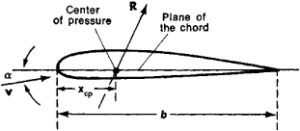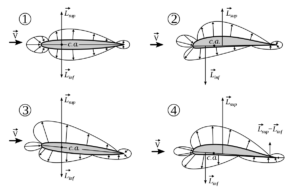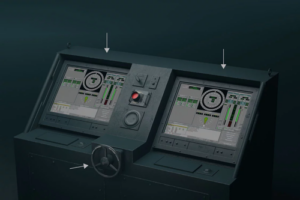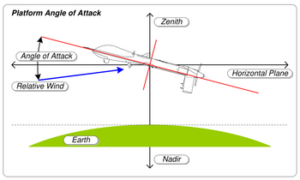In this article the center of pressure example are going to be illustrated in a brief manner.
Before starting with the center of pressure example we should have the primary idea of center of pressure. Center of pressure is defined as the point where total pressure that acts on an object is concentrated, which in turn produces a force acting on that object. This force in turn produces a moment of force that acts on that object.
Center of pressure example with their explanations are stated below:
Both static and dynamic fluid mechanics come under the application of the center of pressure. Usually the center of pressure is located inside the object but sometimes due to the effect of resultant force when a moment of force is generated the center of pressure can have a position outside the object.
The value of the center of pressure depends upon the inclined surface that is immersed in a liquid. Its value is also dependent upon the position of the centroid of an object too. By how much this liquid surface is immersed in a liquid the more the center of pressure is closer to the centroid.
But the weight of the liquid does not bother the center of pressure of that object.

Water dams
This is one important center of pressure example. Hydrostatic forces are those forces that depend on the depth of the liquid linearly. In water dams the force that acts is hydrostatic force. The total force that acts on the body is the product of total liquid pressure and the height of the dam.
The center of pressure of a triangular dam is positioned at the centroid of that dam from the ⅔ portion above the water surface. The moment of the force can be calculated from the position of the center of pressure and the value of the resultant force i.e, the hydrostatic force.
Sailboats
This is another notable center of pressure example. In a sailboat the center of pressure is that point where aerodynamic forces are concentrated. The aerodynamic center of pressure acting on the sails and the hydrodynamic center of pressure acting on the hull are related to each other in order to identify the direction of the boat with the flow of the wind.

This behavior of the sailboat that is controlled by the direction of flow of the wind is known as helm. Helm is of two types. One is the weather helm and the other is the lee helm.
In the case of a weather helm, if the aerodynamic center of pressure is backward with the hydrodynamic center of pressure then the boat turns itself in the direction of the flow of the wind. If the aerodynamic center of pressure is in front to the hydrodynamic center of pressure then this condition will lead to the lee helm.
The weather helm is a desirable condition whereas the lee helm is an undesirable one. Too much of the helm is dangerous as it leads to extra drag beyond the minimal helm that a board experiences.

Aircrafts
We not only need a stable condition in case of sailing a boat but also in the aircraft. The center of pressure also plays a role in aircrafts. Not only a lift is produced in the non symmetrical aerofoil but also a moment of a force is generated in it.
In case of aircrafts the center of pressure is defined as that point where all the aerodynamic pressure is concentrated and the force vector with zero moment acts. The aerodynamic center of an airfoil is that point where the moment is constant with respect to the angle of attack. This moment is produced by the aerodynamic forces.
This aerodynamic center plays an important role in the stability of all flying objects. When the angle of pitch and angle of attack get disturbed by the unwanted forces then the aircraft automatically comes back to its original angle of pitch without being controlled by the pilots by changing the control surface deflection.
A positive longitudinal static stability is needed by an aircraft to come back to its original angle of pitch without taking the help from the pilot.
Missiles
This is another important center of pressure example. Missiles consist of a number of symmetric airfoils. The center of pressure has a constant value for small angles of attack of the symmetric airfoils. In a missile basically a small change in the angle of attack creates additional pressure in the missiles. Hence the center of pressure of a missile is basically that point where there are additional pressure fields included also.

Unguided missiles
In case of unguided rockets angle of attack is zero and the center of pressure provides the limit of angle of attack turning to zero. To obtain a positive stability in a missile the center of pressure should be stayed at a distance from the center of gravity of that missile.
The nose,wings and fins of a missile are used to control or manipulate the contributions of the center of pressure of the entire vehicle for a comparatively lower angle of attack. To calculate the position of the centroid that represents the center of pressure we should multiply the normal force coefficient with the position of the center of pressure.
The center of pressure of the additional pressure fields is positioned below the center of gravity of the missile. The additional force is directed in the same direction as the angle of attack of the missile. Now this force produces a moment which in turn help the missile to get back to its original position.
Guided missiles
In case of a guided missile the fins are used to change the position of the missile at various angles of attack. The center of pressure in this case is defined as the center of pressure of the guided missile for an undeflected position of the fin.
To obtain a positive static stability in a guided missile the distance between the center of pressure and the nose should be greater than the distance between the center of gravity and the nose of that missile.
Also Read:
- How to find energy optimization in data centers
- Center of gravity examples in real life
- Center of gravity formula rectangle
- Center of gravity of cone
- Center of gravity
- Center of gravity formula for cylinder
- Magnetic field at center of loop
- How to measure the electrical energy used by a data center
- Center of gravity formula
- How to calculate center of gravity
Hi…I am Ankita Biswas. I have done my B.Sc in physics Honours and my M.Sc in Electronics. Currently, I am working as a Physics teacher in a Higher Secondary School. I am very enthusiastic about the high-energy physics field. I love to write complicated physics concepts in understandable and simple words.